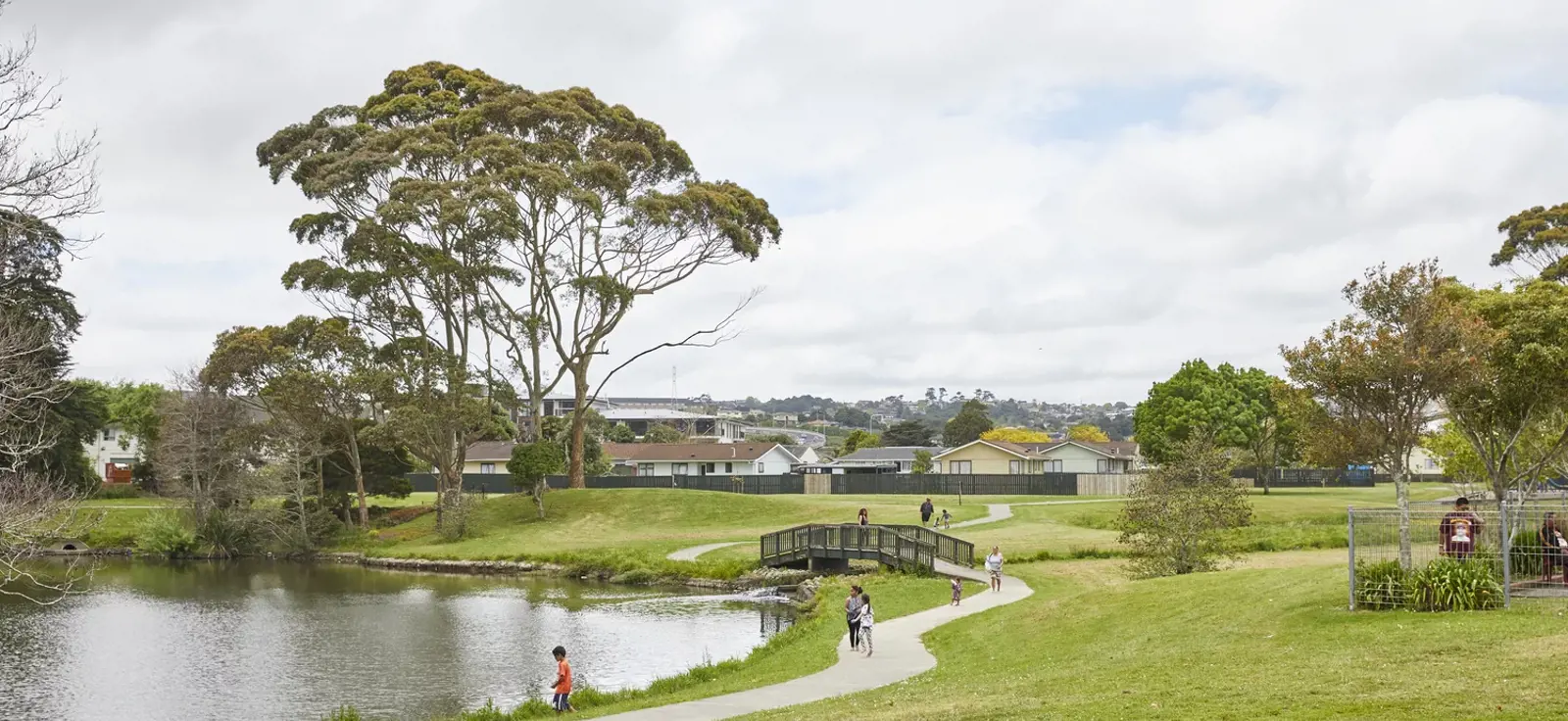South Auckland urban stream regeneration
01 August 2019
- Manukau
- News
Strengthening the connection between nature and the community will be key in a project to restore the mauri of South Auckland’s Puhinui Stream.
Poor water quality, litter and other environmental problems will be addressed to create a healthy ecosystem by instilling a sense of kaitiakitanga (guardianship) through working with the local community and mana whenua.

The project will create a beautiful backyard for the people of Manukau with more green spaces for children to play in, hear bird life and enjoy nature.
It will also protect and encourage the regrowth of the population of many native species in the stream, including the long and short-finned eels for which the Puhinui has been known since Māori settled the area.
The regeneration will seek to connect destinations along the stream’s route, including its ‘missing link’ through the Counties Manukau Health Superclinic site. It will also provide a healthier and more accessible connection between the Manukau Harbour and Auckland Botanic Gardens.
A long-held community aspiration, this project will transform the 12km stream from its source in Tōtara Park, through the heart of Manukau, to where it empties into the Manukau Harbour. The project will be jointly led by Panuku and Auckland Council.
Panuku’s Director of Design and Place Rod Marler says Panuku is investing in the stream to restore the environment while attracting further investment into the area in the form of residential development and economic activity.
“The Puhinui Stream has been neglected for too long. There are many issues we need to resolve such as poor water quality, stream bank erosion, illegal dumping and green space that isn’t being used,” says Marler.
“Over the next 15 years, the population of Manukau is projected to increase from 6,000 to 20,000, and that’s just in the town centre. It’s essential that infrastructure and green spaces are enhanced to support this growth, and that they are planned and designed to the highest quality and detail.”
A COLLABORATION
Panuku and Auckland Council are creating the strategy and work programme in collaboration with others including mana whenua, the local community, Department of Conservation, Healthy Families, Manurewa and Ōtāra-Papatoetoe local boards and The Southern Initiative.
Cultural Design and Engagement Kaihautū (navigator) Lucy Tukua of NativebyNature has been supporting the project engagement with mana whenua. She is confident that the partnership between mana whenua and the wider team supports a mana whenua-led pūrākau (deep cultural narrative) and acknowledges their whakapapa (relationship) underpinning the regeneration of the Puhinui Stream.
Realising the stream’s potential is part of Panuku’s vision for Manukau. Through the strategic plan for the area mana whenua have defined a ‘mai i ngā maunga ki te moana’ (from the mountains to the sea) approach to the Puhinui, an important link to Manukau’s cultural and ecological heritage.
RESTORING AN ECOSYSTEM
It will also seek to expand public open spaces and facilities by improving recreational and other uses of places like Hayman Park, the Barrowcliffe housing development and creating a new playground in Wiri.
Auckland Council’s General Manager of Healthy Waters Craig McIlroy says that improving water quality will be key for the project and sustaining it for the long term is best achieved when council and the community work together.
“Our natural waterways should be well connected to green spaces and to transport options such as walkways and cycleways.”
“If people use and enjoy local waterways they will better appreciate them and will take better care of them.”
Manukau has been identified as vulnerable to climate change. The Puhinui Stream regeneration is a flagship project in Auckland Council’s Auckland Climate Action Plan (ACAP) because of its potential to mitigate the effects of climate change by, for example, planting trees and encouraging walking and cycling through a connected greenway network. It presents a unique opportunity to address this issue through a holistic approach and to provide a case study for other urban environmental regeneration projects.
